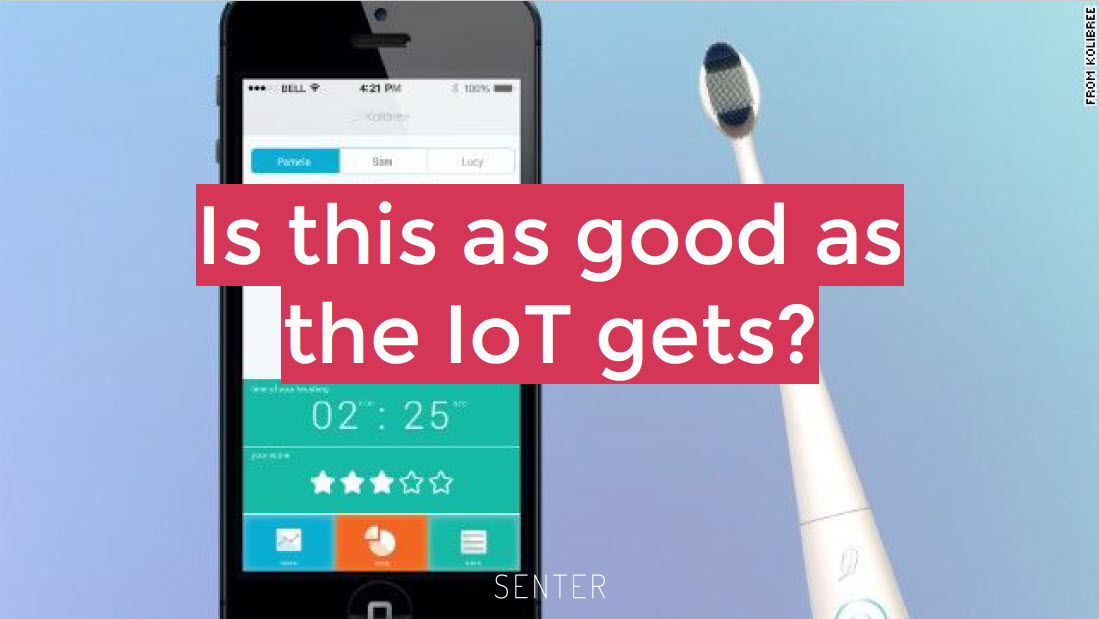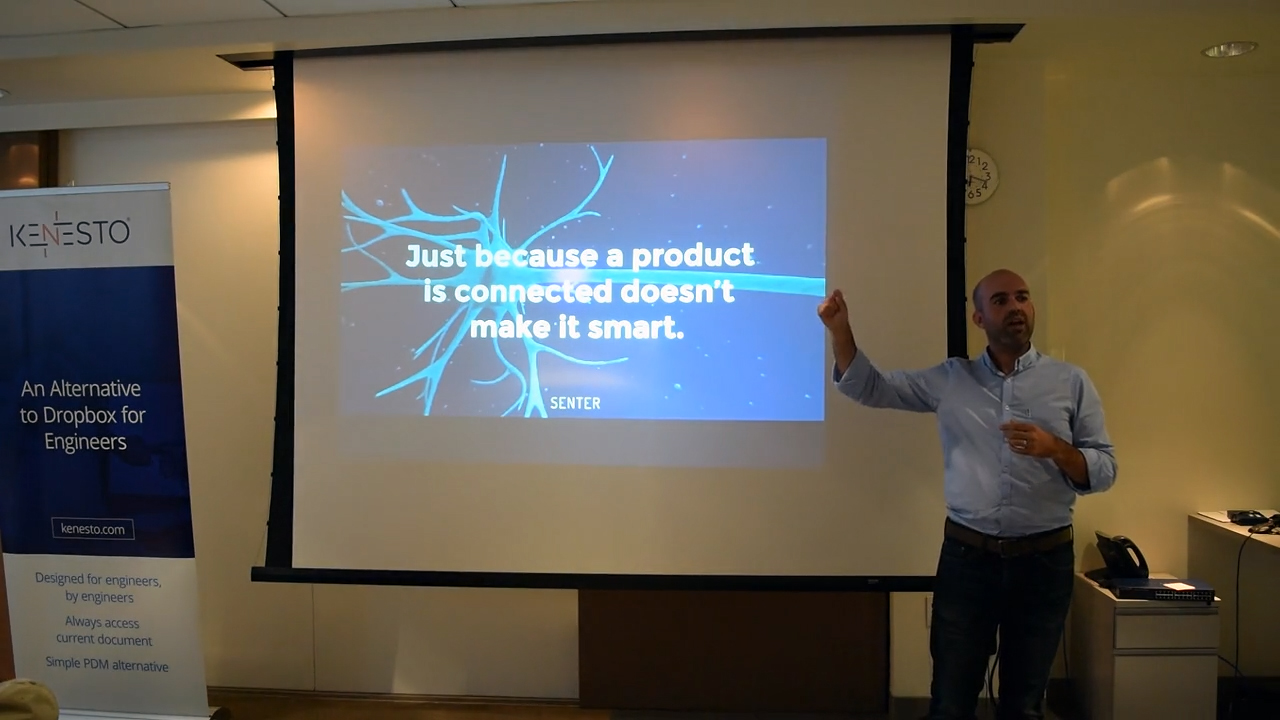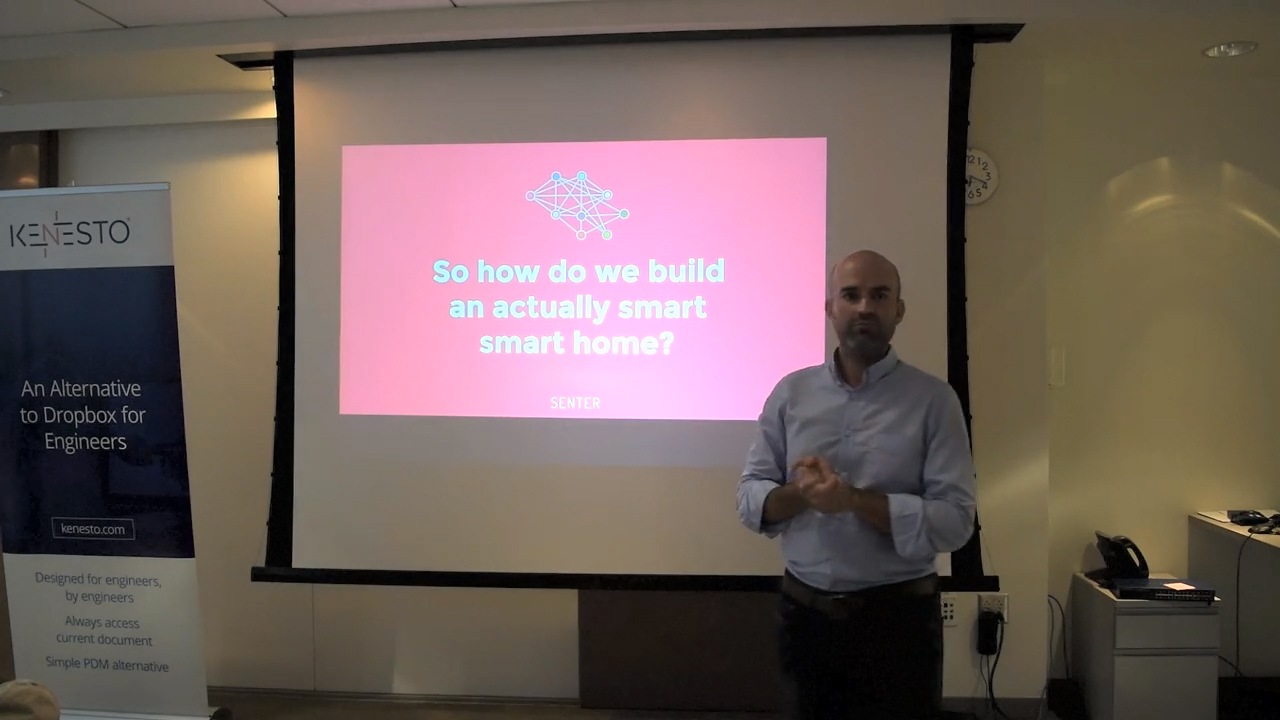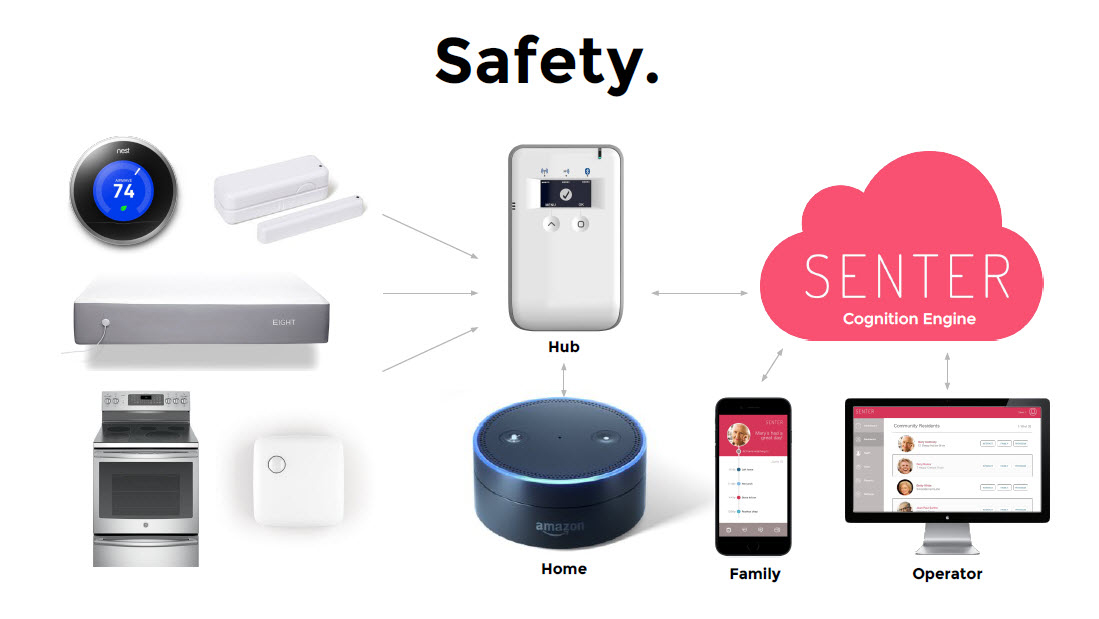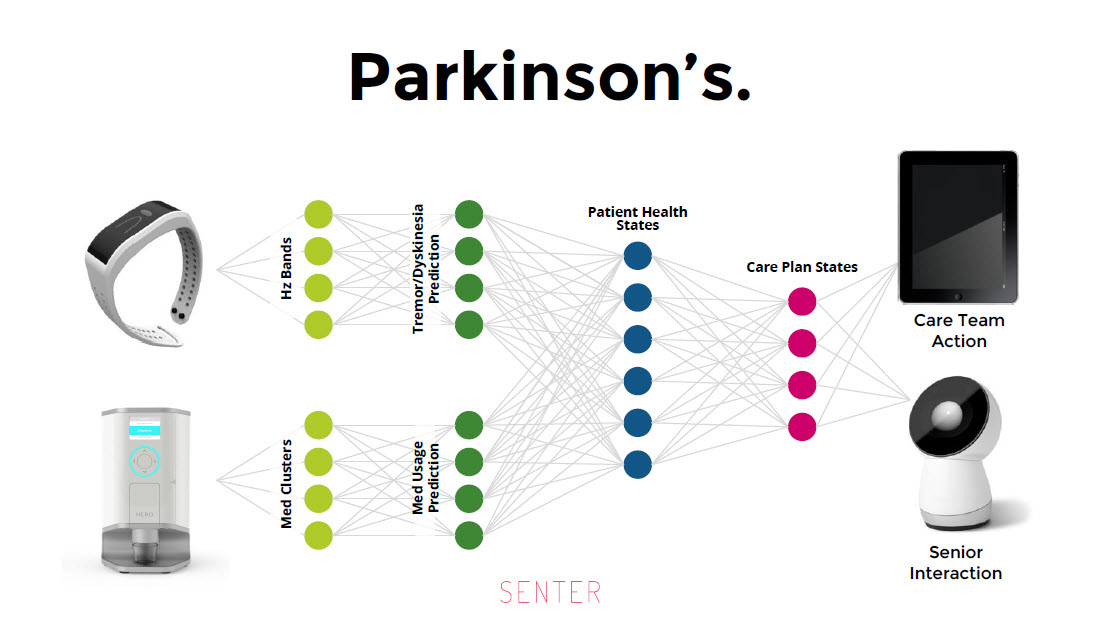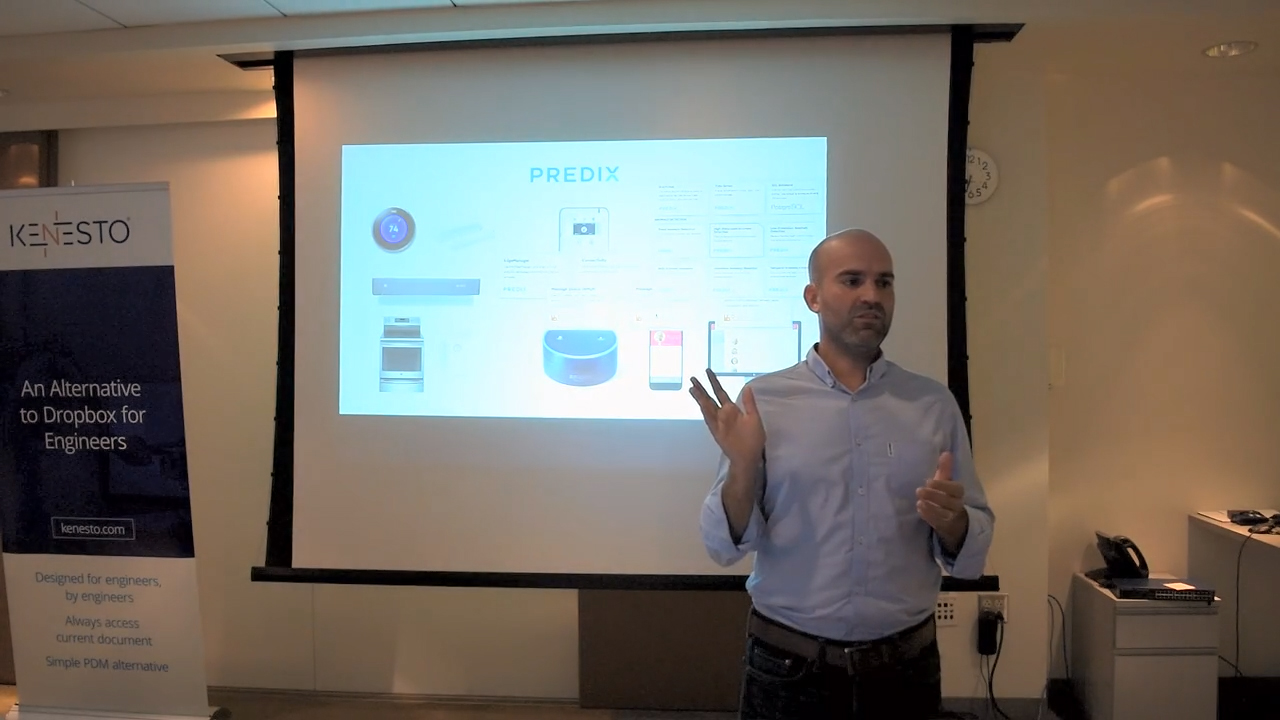Bringing Healthcare Home with the Internet of Things
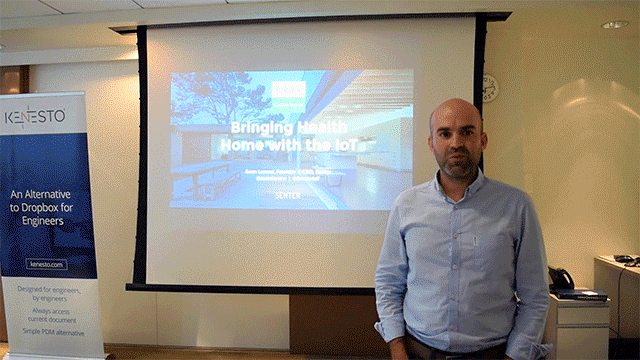
The Internet of a Single Thing
Employing Internet of Things (IoT) solutions in healthcare is moving forward: remotly controling robots in heart surgery, and placing biostamps to secure infant lives, gathering data from hundreds of thousands of sensors in hospitals. Though already profoundly advanced at this stage, are we nearing the end of the journey?
No, not even close. We’re just getting started.
“We’re not in the Internet of Things era, we’re in the Internet of Thing,” said Senter CEO Sean Lorenz at the beginning of his presentation on the potential of combining IoT and healthcare. As discussed at a recent Predix and IoT meetup in Boston, such a combination may result in apps that keep us healthy at home and away from hospitals.
When it comes to healthcare, according to Sean, we are not yet in the IoT era. “We have a lot of things that are individually connected,” he said. “I have an app for every single thing but they’re not connected.”
“The promise of the Internet of Things is combining all that data together.”
—Sean Lorenz, CEO, Senter
As an example, Sean pointed out connected toothbrushes and fitbits, where both connect to your smartphone through an app and you can see how many times you’ve brushed or how many steps you’ve taken. With these apps, you don’t get the answer to the more important questions, like “Am I getting better? Am I getting healthier?”
Smartphones aren’t really smart
Sean elaborated on the difference between a connected device and a smart device. According to him, smartphones aren’t smart, they’re connected. You can get a smartphone to switch on lighting in a room but the phone itself isn’t learning. In comparison, Nest has a thermostat that learns your behavior over time, so it automatically adjusts to save energy.
“Just because you connect a product doesn’t make it smart.” —Sean Lorenz, CEO, Senter
The difference between the two scenarios is that in the Nest’s case, there is learning and intelligence after connecting. This was the point Sean wanted to emphasize in the current IoT space.
“The reason we’re in that trough is that we’ve got to connect it but we don’t have the smarts. Once we get the smarts, we’ll get out of the trough.” —Sean Lorenz, CEO, Senter
Another issue that Sean highlighted was the prominence of dashboard reporting in the IoT space. According to him, these dashboards are often forgotten after a few uses. “What we need is something that’s more actionable that closes the feedback loop and starts to interact with real-time sensor data [which then] informs a business to drive revenue, to get more customers, and to make happier customers,” said Sean.
Building a smart home/hospital
According to Sean, there are four important factors in building a smart home:
- Alliances. There needs to be a set of standards that IoT device providers adhere to, so the devices in the same place can communicate with each other. This will also be useful once auto-discovery of devices in a location is possible for developers to easily make applications locally or through the cloud.
- Aggregation. Each IoT device has its own set of recorded data that needs to be aggregated with other devices and then gets sent to the cloud.
- Intelligence. Sensor data in combination with deep learning and artificial intelligence algorithms will be able to help IoT devices in making decisions.
- Experience. In combination with intelligence, user experience should be one of the most common ways for a smart home to learn either through audio cues or individual IoT device controls.
How does this apply to healthcare?
Sean gave two scenarios, wherein the concept of smart home translates to healthcare.
In the slide above, we can use the connected bed to tell if a person is restless, how many times he/she has gotten off the bed, or if the person hasn’t moved on the bed. The connected stove could also turn itself off in case it was forgotten. All of this becomes data, which the hub device aggregates and sends to the cloud for further processing and transmition to all the interested parties.
The next example is about measuring whether a person with Parkinson’s disease needs to get his/her dosage adjusted. The system starts off with wrist sensors that measure the severity of Dyskinesia or tremors. Once aggregated and sent to the cloud, data then comes back to the connected pill dispenser, telling it whether there is a need to change the schedule of doses.
How does Predix fit in the mix?
Through GE’s Predix, use cases such as the smart home are made possible. Here, Sean listed some Predix services that could be used:
- EdgeManager. Using the EdgeManager as a single point of entry allows for deploying and monitoring devices remotely.
- Connectivity. This connectivity service is plug-and-play, secure, and reliable.
- Event Hub. This industrial-grade messaging system handles high-velocity event data, workload data, or other streaming data.
- Time Series. Enables users to quickly and efficiently manage, ingest, store, and analyze data.
- SQL Database. Enables users to store data securely, support best practices, and facilitate retrieval at the request of other software apps.
- Trend Anomaly Detection. Manages critical time series trend detection.
- High-Dimention Anomaly Detection. Checks multiple sensors for key time series anomaly detection.
- Low-Dimenstion Anomaly Detection. Maintains machine health with this critical time series anomaly detection.
- Shift Anomaly Detection. Enables key time series shift detection.
- Univariate Anomaly Detection. Improves time series rate-of-change anomaly detection.
- Temporal Anomaly Detection. Assures accurate and highly detailed time series anomaly detection.
Where’s the value?
While we can agree that we’re in the cusp of IoT healthcare age, there needs to be actual business value before big players invest their money in IoT for healthcare. One of the things that Sean highlighted when talking about IoT and healthcare is the need to still make money. Being able to save energy through IoT already provides value. Being able to save medical costs through IoT is the next step.
With value-based care, we’re going to see people learn more about health in their homes without having to go to hospitals. As Sean puts it, “we’re going to see a lot more health happening in our house to help reduce that medical cost, to help reduce 20% of the GDP being spent on health in our country by using IoT to see how we live our daily lives.”
Want more details? Watch the video!
Table of contents
|
Related reading
- IoT in Healthcare: “The Internet of Caring Things”
- GE Predix and the DDS Standard Transform Healthcare, Control Robots
- Building Scaled-Down, HA, Mission-Critical Architecture with Cloud Foundry
About the expert



